 |
||
|
||
| ||
 NVIDIA has been an absolute ruler on the market of expensive video cards for such a long time that when we ask how it is possible to sell cards for home PCs at such prices they answer that they ARE in demand...". We were shocked when in autumn 1999 they announced preliminary prices for GeForce256 accelerators. We were in perplexity when an improved version of the GeForce2 GTS was much dearer. And we even passed out when they released a High-End video card in the end of 2000 - GeForce2 Ultra - at $500. The GeForce3 was then expected at $600! Thank God it didn't happened... At the X-mas sales of 2000 lots of users voted against such prices (the GeForce2 Ultra cards turned out to be the most unprofitable among all NVIDIA based cards). Besides, NVIDIA got some troubles with production of the GeForce3, and first such cards were available at $399. A bit later ATI released its RADEON 8500 which had a higher performance and wider possibilities than the GeForce3. NVIDIA became agitated, especially because the RADEON 8500 was promised at $299. But the Sovereign found a way out: it released products which hadn't been planned to appear. So, NVIDIA made the GeForce3 speedier through a new GPU. The new line was called Titanium (Ti). Thus, they killed two birds with one stone. First of all, the senior model wasn't afraid anymore of a speed of the RADEON 8500; secondly, the junior model got an aggressively low price. And third, NVIDIA thus decided where to put chips which didn't work at 200 MHz for sure. So, users got two kinds of the GeForce3: a faster one and a slower one than the original. The senior was called Ti 500 (Titanium 500), and the junior was called Ti 200 (Titanium 200). The difference was only in GPU and memory frequencies: the Ti 200 worked at 175 MHZ, while the Ti 500 operated at 240 MHz. According to the specification of the GeForce3 Ti 500 its memory must run at 250 (500) MHz. As you know, the 3.8 ns memory works at 230 (460) MHz at default, and the reserve between the rated memory and the one specified by NVIDIA is enough for the memory to work at 250 (500) MHz. That is why Ti 500 cards will hardly get memory faster than 3.8 ns. As for the Ti 200, the specification provides for memory operating at 200 (400) MHz that is why the 5 ns memory, which is currently used in GeForce2 Pro cards, is sufficient, and this will allow the company to cut the production expenses. However, some card makers have already announced such cards equipped with 4 ns memory. Of course, the frequencies will be in accordance with the NVIDIA's recommendations - 175/200 (400) MHz. But such a step will let the company mark out its product. For an experienced user it means that he can buy a relatively cheap card on the GeForce3 Ti 200 and get a normal GeForce3 with no troubles. The RADEON 8500 stands somewhere between the GeForce3 and GeForce3 Ti 500, closer to the latter. But as far as a price is concerned it is closer to the GeForce3 Ti 200. That is why NVIDIA should think whether it is worth selling Ti 500 at $350 if the GeForce3 cards are available at less than $300. The release of the RADEON 8500, despite its bugs in some games and a low performance in the Windows XP, made NVIDIA reduce its prices. It is no secret that the Ti 200/500 had been originally expected at $199/399. But let's wait and see what the outcome will be. And now we are going to examine the first samples of the new line. But before we turn to the card in question I should remind you that the whole theoretical base connected with this GPU is concentrated in the following articles (here you can also learn the peculiarities of certain cards and find out how they operate in the latest benchmark tests).
The Titanium line has all the possibilities as the original GeForce3, that is why all peculiarities of this GPU can take place in the Ti 200/500 as well. CardsLeadtek WinFast GeForce3 Ti 500The Leadtek WinFast GeForce3 Ti 500 card has AGP x2/x4 interface, 64 MBytes DDR SDRAM located in 8 chips on the right side of the PCB. 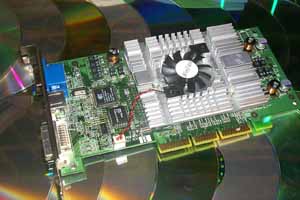 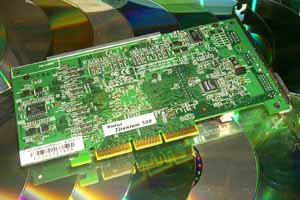 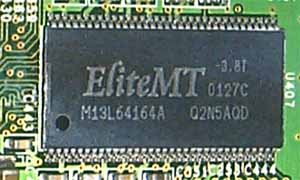 EliteMT produces memory chips with 3.8 ns access time, which corresponds to 260 (520) MHz. As I have already said, all Ti 500 cards work at 250 (500) MHz. The 3.8 ns access time is enough for the memory to work at 250 (500) MHz for sure. But why didn't they release a GeForce3 card with the same memory which would run not at 230 but at 250 MHz? It is probably connected with the design of the cards. In the Titanium review we showed that the Ti 500 and GeForce3 based cards differed in design. But that time we considered a reference card from NVIDIA. And now we are going to look at the design of the Leadtek WinFast GeForce3 Ti 500 and compare it with the reference one: Leadtek WinFast GeForce3 Ti 500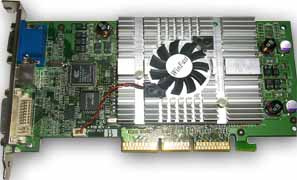 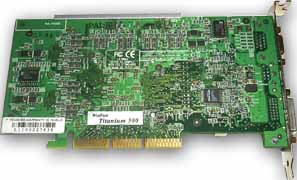 NVIDIA GeForce3 Ti 500 reference card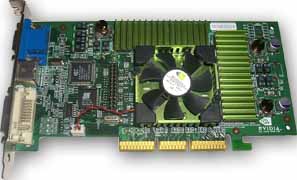 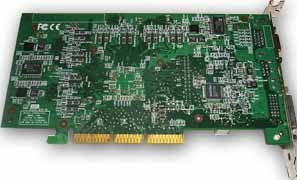 It is clear that the Leadtek's design conforms to the reference one. I suppose that in the new layout some factors affecting heating and functioning of the memory are improved. This allows the manufacturers to lift a frequency of the 3.8 ns memory up to 250 (500) MHz. The cooler is unusually big: 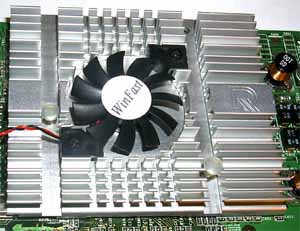  Well, it is a common cooling device both for the memory and the GPU. The cooler, as you can see, is glued with the thermo grease. 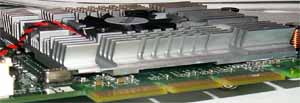 Look how accurately the heatsink is designed: it suits well the height of both the processor and the memory chips. 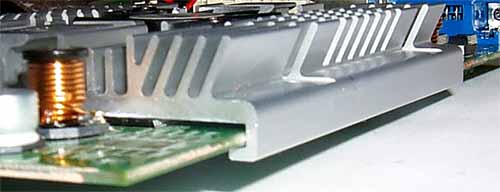 I order this giant wouldn't warp, the top is bent. However, hotter elements can heat up considerably those which warm up less. Such a card as the Ti 500 may turn out to become unstable, especially in tightly closed cases without additional cooling. The Leadtek WinFast GeForce3 Ti 500 card is equipped with the TV-out and DVI. 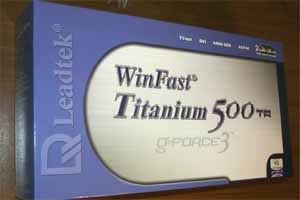 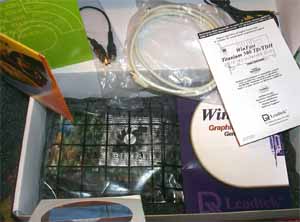 The card ships in a Retail package which includes:
OverclockingThe Leadtek WinFast GeForce3 Ti 500 has reached only 255/275(550) MHz. But it is not surprising as the card has the same memory as usual GeForce3 ones, and the Ti 500 chip is the same as on the GeForce3. Note:
Leadtek WinFast GeForce3 Ti 200The Leadtek WinFast GeForce3 Ti 200 card has AGP x2/x4 interface, 64 MBytes DDR SDRAM located in 8 chips on the right side of the PCB. 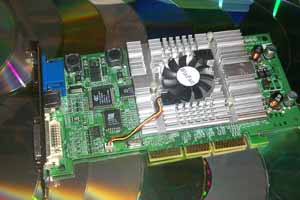 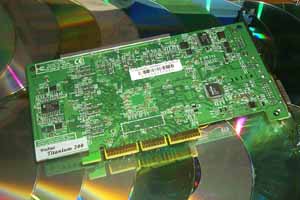 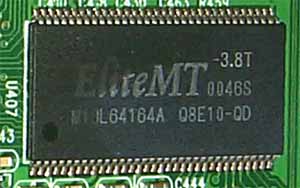 EliteMT produces memory chips with 3.8 ns access time, which corresponds to 260 (520) MHz. It is interesting that despite the fact that the specification provides for 5 ns memory, Leadtek installs the same 3.8 ns one as on all GeForce3 cards. Let's look at the PCB and compare it with the reference one: Leadtek WinFast GeForce3 Ti 200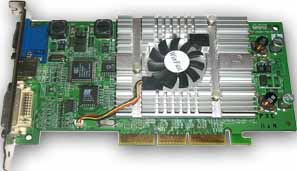  NVIDIA GeForce3 Ti 200 reference card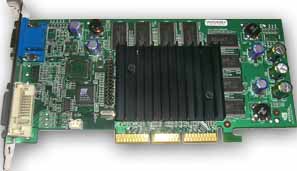 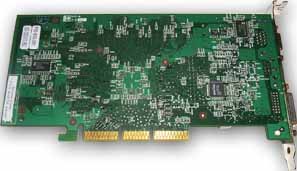 You see, the difference is significant. Moreover, for this card the engineers use the former design from WinFast GeForce3 TDH which supports Hardware Monitoring. You can compare left parts of the PCB of the WinFast GeForce3 Ti 500 and Ti 200: Leadtek WinFast GeForce3 Ti 500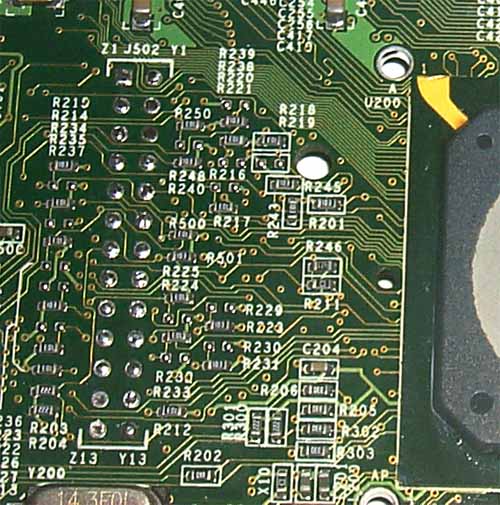 Leadtek WinFast GeForce3 Ti 200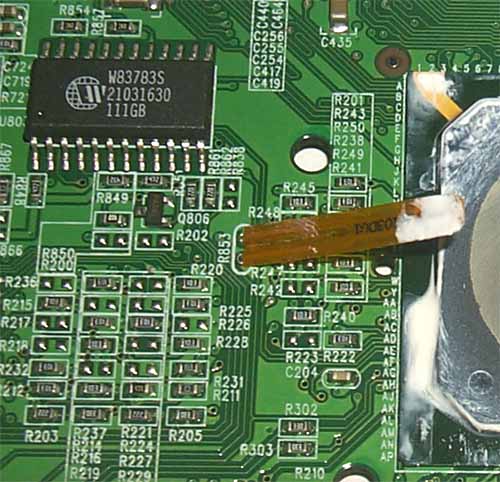 On the Ti 200 card you can see a part of a sensor which provides operation of the Hardware Monitoring. The cooler is the same as of the WinFast GeForce3 Ti 500. Besides, the Ti 200 card is equipped with TV-out and DVI. 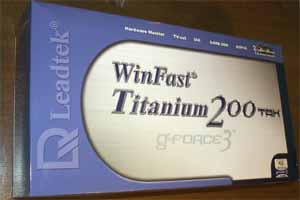 The card ships in a Retail package which has all the same accessories. OverclockingThis time the overclocking potential is much better - 220/275(550) MHz. I expected the memory's potential to be high as it is identical to that of the GeForce3 and WinFast GeForce3 Ti 500 cards. The chip couldn't get higher than 220 MHz, though its frequency managed to exceed 200 MHz. It means that the Ti 200 cards equipped with such a fast memory will be able to outscore a usual GeForce3. Installation and driversTest system:
The test stands were completed with the ViewSonic P810 (21") and ViewSonic P817 (21") monitors. During the tests we used NVIDIA drivers of v21.85, VSync was off, the S3TC technology was enabled. I must say that the card come with the Leadtek drivers based on the NVIDIA 14.62 and with the WinFox utility which can help a user adjust its video card. Earlier we have already described this program, but its newer version offers you also to update a firmware version right in the Windows: 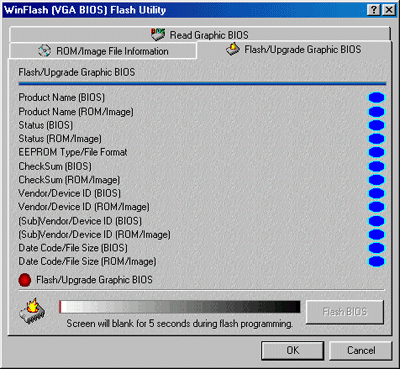 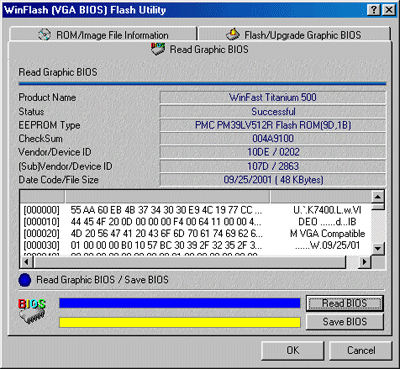 By the way, the BIOS of all Leadtek cards looks really impressing when you turn on a computer:  For the comparative analyses we used the following cards:
Test resultsThe image quality is traditionally high. There were no complains when the card worked at 1600x1200, 85 Hz. For estimation of 3D quality we used the following programs:
Quake3 Arenademo002, standard modesThe tests were carried out in two modes: Fast (16-bit color) and High Quality (32-bit color). 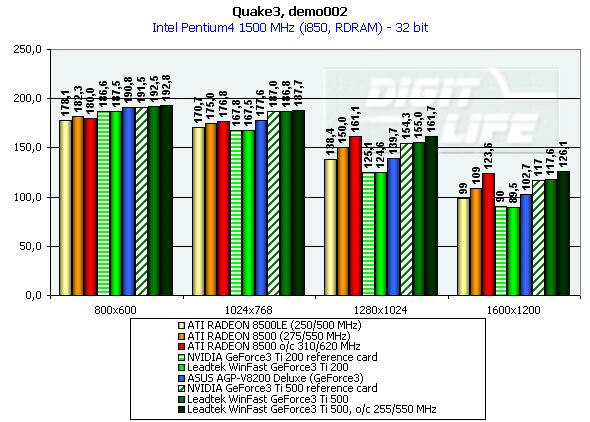 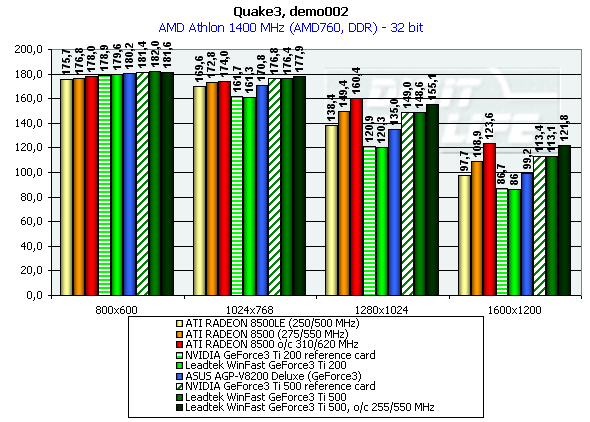 As you can see, the Leadtek cards go on a par with the reference cards from NVIDIA (hatched columns on the diagrams). You see that the junior RADEON 8500LE is at the level of the GeForce3, which is more than the Ti 200 is able of. It is especially well seen on the Athlon 1400. Here the ATI RADEON 8500 has almost caught up with the Ti 500, though it works at a much lower speed. Quaver, highest quality modesThe tests were carried out in the 32-bit color mode at the highest detailing level and with the complicated geometry (r_subdivisions "1" r_lodCurveError "30000"). This benchmark loads accelerators not only with geometry, but also with a huge volume of textures and effects. 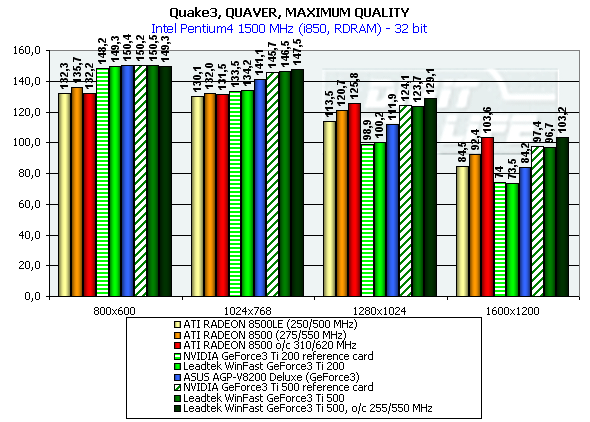  When on the Pentium4 1500 platform, the Titanium line beats the RADEON 8500, but when on the Athlon 1400, NVIDIA is edged out. GiantsThe tests were conducted in the highest quality mode with all effects being enabled in 32-bit color.  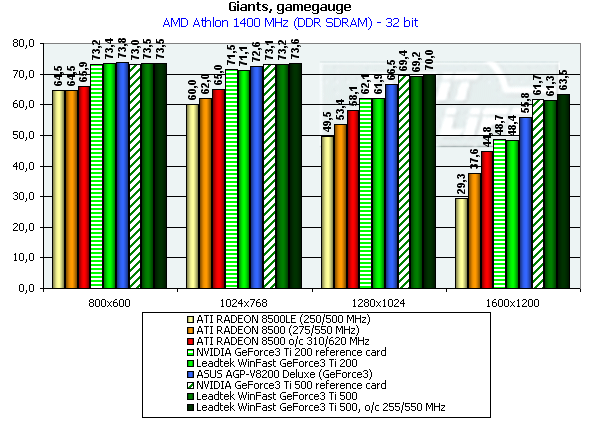 It is obvious that the RADEON 8500 loses the battle. In closing, I'd like to advise you to read also other reviews of GeForce3 based video cards. Besides, in our 3Digest you can find thorough information on the 3D performance of GeForce3 cards on different platforms. TV-outSince video cards of these class are not equipped with the TwinView technology, it is difficult to display an image simultaneously on a TV screen and on a monitor, especially without utilities from the third companies. The TV-out possibilities are standard: 800X600 at 50-60 Hz and that's all. There are too few settings for centering and changing edges of an image on a TV screen. ConclusionWell, we have studied a new Titanium series in implementation of Leadtek. Though it lacks for the GeForce2 Ti, it still was interesting to look how 3 NVIDIA's cards fight against the RADEON 8500.
The complete characteristics of video cards of this and other classes can be found in our 3Digest. Highs:
Lows:
Write a comment below. No registration needed!
|
Platform · Video · Multimedia · Mobile · Other || About us & Privacy policy · Twitter · Facebook Copyright © Byrds Research & Publishing, Ltd., 1997–2011. All rights reserved. |